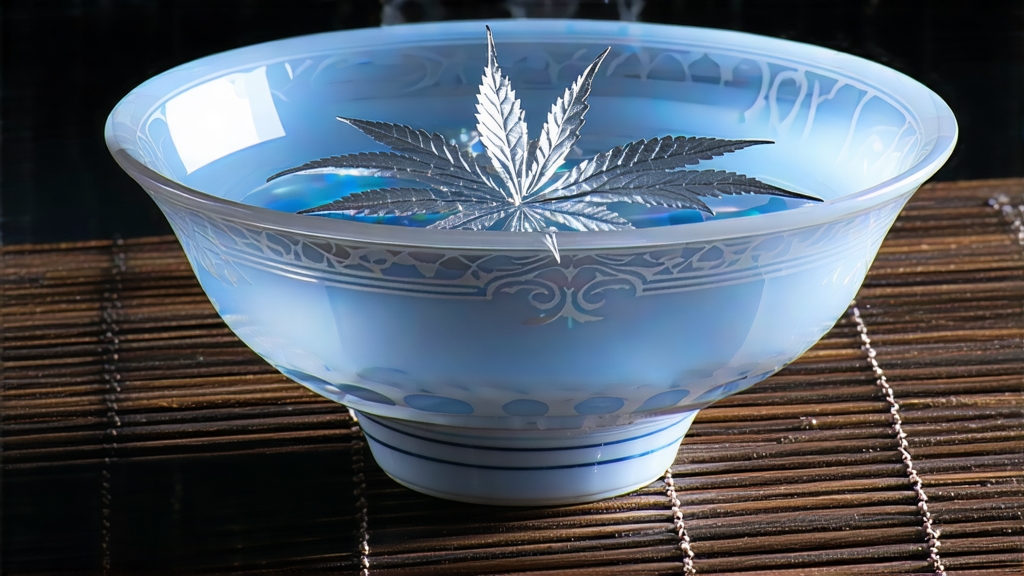
Tucked high on the forested ridges of Yunnan’s Simao and Lincang prefectures, where the Mekong bends like liquid jade, a tea is made that has never seen the sun. Local tea farmers call it Yue Guang Bai—“Moonlight White”—because every step of its creation is timed to the lunar calendar and carried out under the cool, diffused light of the moon. To the international drinker accustomed to the bright, hay-like briskness of Fujian Silver Needle or the peach-nectar softness of White Peony, Yue Guang Bai offers a different register of white-tea experience: darker leaf, duskier liquor, and a flavor that oscillates between warm bamboo sap and chilled lychee. This article invites you to explore that register in full—from mythic origin to practical brewing—so that the next time you open a sealed pouch of downy, two-tone leaves you will know exactly how to coax the moonlight back into your cup.
-
Historical haze and recorded fact
White tea as a formal category appears in Song-dynasty treatises, yet Yue Guang Bai’s documented history is barely three decades old. In the early 1990s, small family workshops in Jinggu County began experimenting with white-processing techniques on the region’s indigenous Da-ye (broad-leaf) Assamica cultivar. The goal was to create a tea that could command higher prices than the area’s bulk pu-erh maocha. Word spread that the slow, nocturnal withering produced a naturally sweet, low-tannin liquor that needed no aging. By 2005, Moonlight White was being flown to Beijing and Shanghai, and within ten years it had crossed the Pacific, enchanting specialty cafés from Portland to Melbourne. While no Ming-dynasty emperor ever sipped it, Yunnan locals still anchor the tea in folklore: they say the leaves absorb “yin energy” from the moon, balancing the “yang heat” that sun-dried pu-erh carries. Whether one regards that as poetry or agronomy, the result is a tea whose very narrative tastes of night air. -
Botanical fingerprint and terroir
Unlike the small-leaf Fuding Da Bai cultivar used in coastal Fujian, Yue Guang Bai is crafted from Yunnan Da Ye Zhong, a tea tree that can grow into a twenty-meter canopy if left unpruned. The leaves are broader, thicker, and waxier, allowing them to retain moisture—and therefore aromatic precursors—longer during withering. The core terroir is the “Northern Tropic Cloud Belt” between 1,600 and 1,900 m elevation, where diurnal temperature swings can exceed 15 °C. At night, cool air drains down from the Himalayas, condensing morning mist that acts like a natural humidity chamber. Iron-rich laterite soil, interplanted walnut and chestnut trees, and a biodiversity index three times higher than monoculture tea gardens all translate into a leaf chemistry rich in L-theanine, geraniol, and trans-β-ocimene—the molecules responsible for Yue Guang Bai’s signature honeyed-lavender nose. -
Craft: the rhythm of dusk to dawn
Harvesting begins on the first day of the waning moon in late March. Pickers select only the standard “one bud with two immediate leaves,” taking care to keep the stem intact so that cellular sap continues to migrate. Plucking stops at sunrise; by 8 a.m., the baskets are already in the shaded corridors of the farmhouse. Here the leaves are spread on raised bamboo trays in single layers no thicker than two centimeters. During the day, electric fans maintain an airspeed of 0.3 m s⁻1 to prevent enzymatic browning, but direct sunlight is strictly forbidden. At twilight, windows are flung open, allowing mountain air at 70–75 % relative humidity to bathe the leaves until dawn. This moon-withering lasts a minimum of 72 hours and can extend to 120 if the weather stays cool. Because oxidation proceeds in slow motion, chlorophyll breaks down into pheophytin, giving the finished leaf its distinctive upper-surface charcoal stripe, while the downy underside remains silvery. Finally, the leaves are “soft-fired” for eight minutes at 45 °C in charcoal-heated drum dryers—just long enough to reduce moisture to 7 % without fixing enzymes completely. The